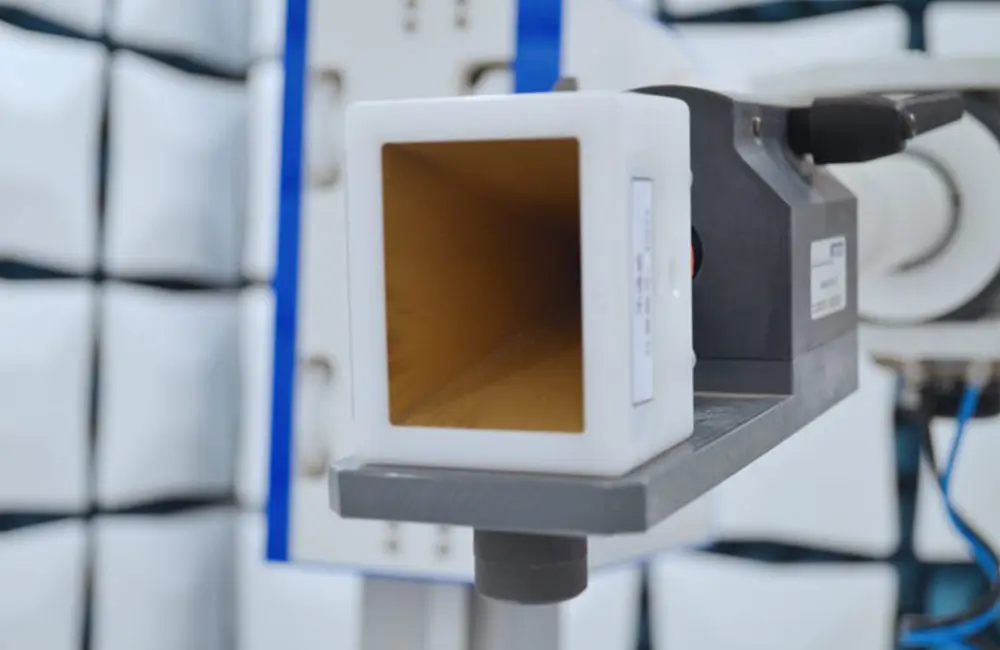
RF Test Lab Report
Wireless communication equipment includes one or more radio transmitters or receivers, or communication devices, whether fixed, vehicle-mounted, portable, or components thereof. Wireless communication devices can be used with auxiliary equipment, but their basic functions do not depend on auxiliary equipment to operate. The advantage of wireless communication devices is that they are not restricted by wiRED environments, offer mobility, and can communicate via wireless connections while in motion. Installation is simpler, and the cost is lower. However, wireless communication devices are more susceptible to interference, and have limitations in transmission speed, range, and bandwidth. With the development of wireless communication technology, the era of IoT (Internet of Things) has arrived, and wireless products are now integrated into various scenarios of people’s daily life and work, making compliance for these products a significant concern.

Wireless RF Laboratory Testing Standards
Relevant Standards:
- GB/T 22451: General Requirements for Electromagnetic Compatibility of Wireless Communication Equipment
- GB/T 22450.1: Limits and Measurement Methods for Electromagnetic Compatibility of 900/1800MHz TDMA Digital CellULar Mobile Communication Systems, Part 1: Mobile Stations and Their Auxiliary Equipment
- YD/T 1595.1: Electromagnetic Compatibility Requirements and Measurement Methods for 2GHz WCDMA Digital Cellular Mobile Communication Systems, Part 1: User Equipment and Auxiliary Equipment
- GB/T 19484.1: Electromagnetic Compatibility Requirements and Measurement Methods for 800MHz/2GHz cdma2000 Digital Cellular Mobile Communication Systems, Part 1: User Equipment and Auxiliary Equipment
- YD/T 1592.1: Electromagnetic Compatibility Requirements and Measurement Methods for 2GHz TD-SCDMA Digital Cellular Mobile Communication Systems, Part 1: User Equipment and Auxiliary Equipment
- YD/T 2583.14: Electromagnetic Compatibility Requirements and Measurement Methods for Cellular Mobile Communication Equipment, Part 14: LTE User Equipment and Auxiliary Equipment
- YD/T 2583.18: Electromagnetic Compatibility Requirements and Measurement Methods for Cellular Mobile Communication Equipment, Part 18: 5G User Equipment and Auxiliary Equipment
- YD/T 1597.1: Electromagnetic Compatibility Requirements and Measurement Methods for 2GHz cdma2000 Digital Cellular Mobile Communication Systems, Part 1: User Equipment and Auxiliary Equipment
- GB/T 19483: Electromagnetic Compatibility Requirements and Measurement Methods for Cordless Telephones
- ETSI EN 300 328: Electromagnetic Compatibility and Radio Spectrum Matters (ERM); Wideband Transmission Systems; Data Transmission Equipment Operating in the 2.4GHz ISM Band and Using Wideband Modulation Techniques; Harmonized EN Covering the Essential Requirements
- YD/T 3168: Technical Requirements and Test Methods for RF Indicators of Public Wireless LAN Equipment
- GB/T 12572: General Requirements and Measurement Methods for Parameters of Radio Transmitting Equipment
Wireless RF Laboratory Testing Process:
1. Consult the China JJR Laboratory.
2. Provide product information to the laboratory engineers.
3. Issue the testing plan, duration, and costs.
4. Send the product to the laboratory for testing.
5. Receive the report.
Email:hello@jjrlab.com
Write your message here and send it to us
 WEEE Registration for Waste Electrical &Electr
WEEE Registration for Waste Electrical &Electr
 MSDS Chemical Safety Testing
MSDS Chemical Safety Testing
 What Are the Differences Between UK REACH and EU R
What Are the Differences Between UK REACH and EU R
 E-Cigarette GB 41700 Compliance Testing
E-Cigarette GB 41700 Compliance Testing
 What Are the Testing Items of California Propositi
What Are the Testing Items of California Propositi
 E-Cigarette EU TPD Testing
E-Cigarette EU TPD Testing
 Testing Certification for E-cigarettes Exported to
Testing Certification for E-cigarettes Exported to
 What is Amazon US CPC Certification?
What is Amazon US CPC Certification?
Leave us a message
24-hour online customer service at any time to respond, so that you worry!




